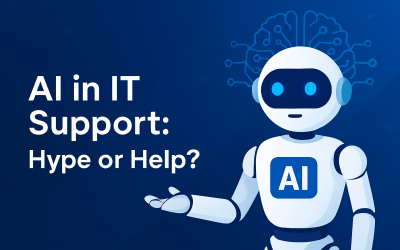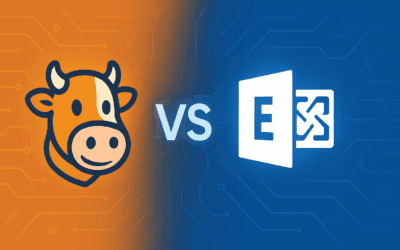Step 1: Understanding the Importance of Data Sovereignty
Definition of Data Sovereignty
Data sovereignty refers to the concept that data is subject to the laws and regulations of the country in which it is collected and stored. For businesses, this means that understanding where their data is hosted is crucial, as it directly impacts compliance with local regulations and the security of sensitive information.
Implications for Businesses
Understanding the European cloud is essential for navigating the complexities of data sovereignty and ensuring compliance with regulations.
Understanding the European cloud is essential for navigating the complexities of data sovereignty and ensuring compliance with regulations. The European cloud landscape offers a variety of local hosting providers who understand the unique challenges of compliance.
Moreover, the European cloud can significantly enhance data security and compliance, ensuring that businesses remain competitive in a rapidly evolving digital landscape.
Data sovereignty has significant implications for businesses, particularly those that operate across borders. Non-compliance can result in hefty fines, legal repercussions, and damage to reputation. Moreover, data sovereignty issues can affect the availability of data and the ability to respond to data requests from authorities, making it essential for entrepreneurs to have a clear understanding of where their data resides and the legislative frameworks governing it.
Step 2: Assessing Your Current Hosting Solutions
When evaluating your current hosting solutions, consider how they align with the European cloud standards to ensure your operations are compliant and secure.
Identifying Existing Providers
By understanding your hosting solutions in relation to the European cloud, you can better address compliance challenges.
The first step in securing your hosting solution is to assess your current providers. This involves identifying all hosting services you use, including cloud storage, in-house servers, and third-party vendors. Understanding your current infrastructure will provide a foundation for evaluating security levels and compliance with European regulations.
Evaluating Compliance with GDPR
Local hosting providers operating within the European cloud can provide tailored solutions that enhance compliance and security.
Once you have identified your existing hosting solutions, it is crucial to evaluate their compliance with GDPR. This involves reviewing the data handling practices of your providers, ensuring they have adequate measures in place to protect personal data, and confirming they are transparent about their data processing activities. A comprehensive audit will highlight any potential gaps in compliance that may expose your business to risks.
Selecting a local provider within the European cloud can significantly streamline your compliance processes and enhance your data protection strategies.
Step 3: Researching Local Hosting Providers
Benefits of Local Hosting
Providers in the European cloud adhere to strict security certifications that ensure your data is managed securely and in compliance with applicable laws.
Opting for local hosting providers can provide several advantages, including improved data sovereignty, better control over data access, and enhanced compliance with local laws. Local providers are often more familiar with the regulatory landscape and can offer services tailored to meet specific compliance requirements, reducing the risk of legal pitfalls.
Assessing security protocols is vital for organizations utilizing the European cloud to ensure that data remains secure from unauthorized access.
Criteria for Selection
When selecting a local hosting provider, consider criteria such as their reputation, compliance certifications (like ISO 27001), customer service quality, and their ability to scale services according to your business needs. Conducting thorough research into potential providers will help ensure that you select a partner who prioritizes security and compliance.
Implementing MFA is a crucial step, particularly for businesses operating in the European cloud, where sensitive data protection is paramount.
Step 4: Evaluating Security Standards
Understanding Security Certifications
Security certifications serve as a benchmark for assessing the commitment of hosting providers to maintaining secure environments. Certifications such as ISO 27001, SOC 2, and PCI DSS can provide assurance that a provider adheres to rigorous security standards. Understanding these certifications will help you make informed decisions about your hosting solutions.
Assessing Provider Security Protocols
Understanding encryption practices is essential for organizations that store data in the European cloud to maintain high levels of security.
In addition to certifications, it is vital to evaluate the specific security protocols employed by your hosting provider. This includes their approach to data encryption, firewall configurations, and incident response strategies. Understanding these protocols will help verify that a provider can effectively protect your data against unauthorized access and cyber threats.
Applying effective encryption practices across all platforms is vital for businesses utilizing the European cloud.
Step 5: Implementing Multi-Factor Authentication
Importance of Enhanced Security
Compliance with GDPR is particularly important for companies using hosting solutions in the European cloud.
Multi-factor authentication (MFA) adds an extra layer of security by requiring users to provide two or more verification factors to gain access to systems. This significantly reduces the risk of unauthorized access, especially in the event that a password is compromised. For businesses, implementing MFA is a crucial step in protecting sensitive data and ensuring secure access to systems.
To ensure compliance in the European cloud, businesses must regularly review their data handling practices.
Best Practices for Implementation
To effectively implement MFA, businesses should ensure that all employees are required to use it for accessing sensitive systems. Organizations can utilize various methods for MFA, including SMS verification, authenticator apps, and hardware tokens. Additionally, training employees on the importance of MFA and how to use it can enhance compliance and security across the organization.
Regular security audits are essential for businesses leveraging the European cloud to maintain compliance and security standards.
Step 6: Data Encryption Strategies
Establishing a security audit schedule can help businesses in the European cloud identify vulnerabilities early.
Types of Encryption
Data encryption is essential for protecting sensitive information both at rest and in transit. There are two main types of encryption: symmetric and asymmetric. Symmetric encryption uses the same key for both encryption and decryption, while asymmetric encryption uses a pair of keys. Understanding the strengths and weaknesses of each type can help businesses make informed decisions about their encryption strategies.
An effective incident response plan is critical for organizations operating in the European cloud, ensuring rapid response to breaches.
Implementing Encryption Practices
Training staff on incident response is particularly important for businesses using the European cloud to ensure readiness.
Effective encryption practices involve not only choosing the right type of encryption but also applying it consistently across all data storage and transmission platforms. Businesses should ensure that all sensitive data, including customer information and financial records, is encrypted to prevent unauthorized access. Regularly updating encryption protocols and conducting audits will help maintain the integrity of these security measures.
Organizations must prioritize education on cybersecurity practices to protect data stored in the European cloud.
Step 7: Ensuring Compliance with European Regulations
Overview of GDPR Requirements
Promoting continuous learning about cybersecurity is especially important for employees working with data in the European cloud.
The GDPR sets forth strict guidelines for the collection, storage, and processing of personal data. It emphasizes the need for transparency, user consent, and the right to access data. Businesses must ensure they have appropriate consent mechanisms in place and that they can demonstrate compliance through proper documentation and audits.
Steps to Achieve Compliance
To achieve compliance with GDPR, businesses should start by conducting a thorough data audit to identify what personal data they collect and how it is processed. Creating a data protection policy, training employees on GDPR requirements, and appointing a Data Protection Officer (DPO) are also essential steps. Regular reviews of data handling practices and proactive adjustments will help maintain compliance in an evolving regulatory landscape.
Step 8: Regular Security Audits and Assessments
Importance of Ongoing Evaluation
Regular security audits and assessments are essential for identifying vulnerabilities and ensuring that security measures remain effective. These evaluations should be conducted periodically and after any significant changes in infrastructure or business operations. Ongoing assessments can uncover weaknesses before they can be exploited by cybercriminals.
Creating a Security Audit Schedule
A well-structured security audit schedule should include both internal and external reviews. Internal audits can help identify gaps in security practices, while external audits provide an objective assessment of your hosting solutions. Establishing key performance indicators (KPIs) for security can also help track improvements over time and ensure continuous compliance with regulations.
Step 9: Developing an Incident Response Plan
Components of an Effective Plan
An effective incident response plan outlines the steps to be taken in the event of a data breach or security incident. Key components include identification, containment, eradication, recovery, and lessons learned. Each step should be clearly defined, with specific roles and responsibilities assigned to team members to ensure a swift response.
Training Staff for Incident Response
Training staff on the incident response plan is critical for ensuring that everyone knows their role during an incident. Regular drills and simulations can help prepare the team for real-world scenarios, improving response times and reducing the impact of security incidents. Moreover, fostering a culture of security awareness among employees can significantly enhance an organization’s readiness to handle potential breaches.
Step 10: Building a Culture of Cybersecurity
Educating Employees on Security Practices
Building a strong culture of cybersecurity starts with education. Organizations should provide regular training sessions to ensure that employees are aware of the latest threats and understand their role in protecting sensitive information. Topics such as phishing awareness, password management, and secure browsing habits should be covered to empower employees to act as the first line of defense.
Promoting Continuous Learning and Awareness
In addition to initial training, promoting continuous learning within the organization helps keep cybersecurity at the forefront of employees’ minds. This can be done through newsletters, workshops, and updates on emerging threats. Encouraging staff to participate in cybersecurity awareness events and providing incentives for completing training can further strengthen this culture.
Conclusion
Establishing secure hosting solutions within the European cloud requires a multifaceted approach that prioritizes data sovereignty, compliance, and comprehensive security measures. By following the ten steps outlined in this article, entrepreneurs and business owners can create a robust framework to protect sensitive data and ensure compliance with local regulations. From understanding the importance of data sovereignty to cultivating a culture of cybersecurity, each step is essential in navigating the complexities of secure hosting in the European cloud.
Do you ever need some help? please do not hesitate to contact us!
We are always happy to help and have alot of datacenter experience in and outside of Europe.
Don’t forget the follow up steps: Selecting the right software for your business!
FAQs
What is data sovereignty and why is it important?
Data sovereignty is the concept that data is subject to the laws of the country in which it is stored. It is important because it ensures compliance with local regulations, such as the GDPR, and helps protect sensitive information from unauthorized access.
How can I assess my current hosting solutions for compliance?
Start by identifying all hosting providers and evaluating their data handling practices against GDPR requirements. Conduct audits to assess their compliance with necessary regulations and security standards.
What are the benefits of choosing local hosting providers?
Local hosting providers offer advantages such as better compliance with local laws, improved data control, and a deeper understanding of the regulatory landscape. They are often more responsive to local businesses’ needs.
How often should I conduct security audits?
Security audits should be conducted regularly, typically at least annually, and after any significant changes to your infrastructure. This ensures that vulnerabilities are identified and addressed promptly.
What should be included in an incident response plan?
An incident response plan should include steps for identification, containment, eradication, recovery, and post-incident analysis. It should clearly define roles and responsibilities for team members involved in the response.




0 Comments